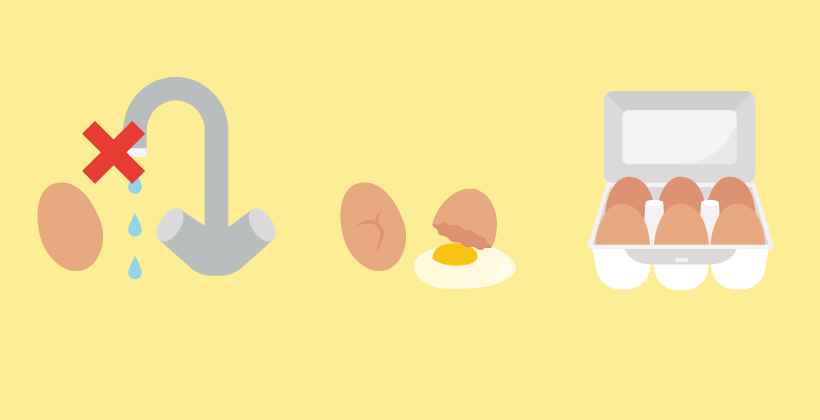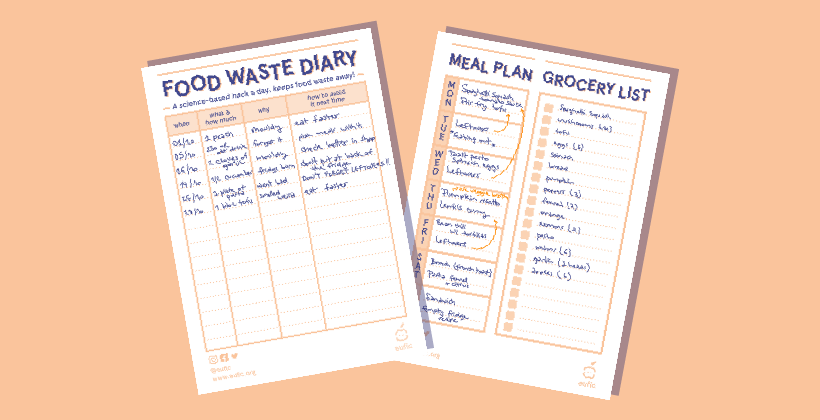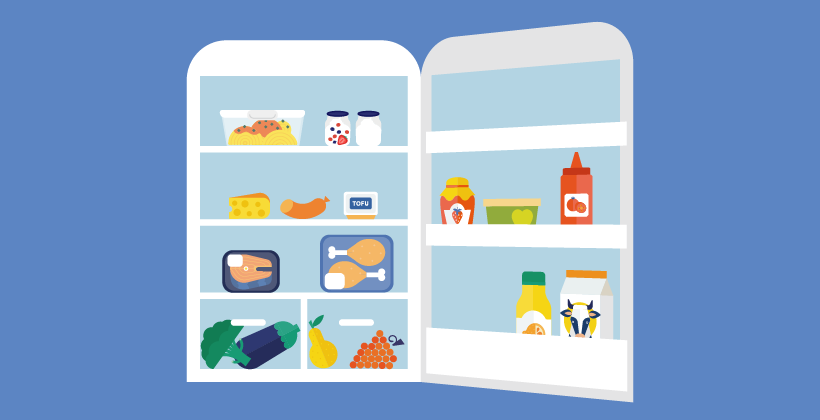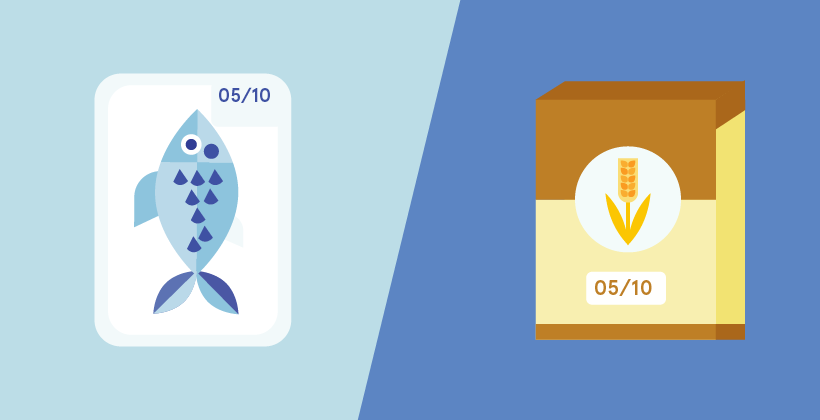How to reduce and avoid food waste at home
Last Updated : 12 September 2021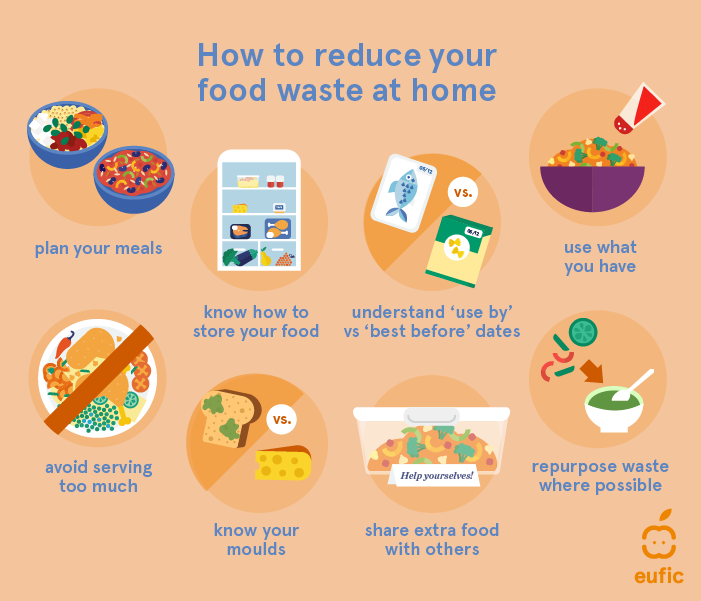
Around 88 million tonnes of food is wasted in the EU every year, with more than half coming from households5, but we can all take action by changing the way we shop, cook, and plan our meals to avoid wasting food, money, and resources.1
- Plan your meals
- Know how to store your food
- Understand ‘use by’ vs ‘best before’ dates
- Use what you have
- Avoid serving too much
- Know your moulds
- Share extra food with others
- Repurpose waste where possible
1. Plan your meals
It’s only a bargain if we can use the food in time! Be aware that our schedules can be busy and unpredictable. ‘Buy-one-get-one-free’ and other bulk deals lead to buying more than we need, shifting the waste from the store to our home. In food waste terms, it’s wise not to buy more than needed.
Simple tips can help you to only buy what you need:
- Prepare a meal plan for the week.
- Check or take a photo of what’s left in the fridge and cupboards before shopping, so you know what you have
- Go food shopping after a meal rather than right before
- Use a shopping list, noting the amounts required.
- Factor in potential eating out occasions.
- Give imperfect fruit and vegetables a chance, they are perfectly edible and nutritious.5
2. Know how to store your food
Make sure food doesn’t disappear in the cupboards or fridge by applying the first-in-first-out principle. Fresh groceries go behind products nearer to expiry dates which move closer and more visible.
Organise the fridge by keeping ready to eat foods such as leftovers on the top shelf and sealed raw meat and fish on the bottom shelf to avoid dripping. Reserve a separate drawer for fruit and vegetables.
Unsure if a food item should be stored inside or outside the fridge? Check our list of common confusions while storing food.
Keep track of food storage at home by using a digital storage guide, smart fridge, app or online template.
3. Undertsand 'use by' vs 'best before' dates
The 'use by' date on packaged food tells us when it is still safe to eat the product. The use-by date is usually found on perishable foods such as chilled meat, dairy, and ready-made meals. To avoid wasting food these should be purchased when, and in the amount, necessary. It’s best not to stock up.
'Best before' dates are more flexible than use by date. After this date, foods such as dried beans, lentils, and pasta, can be consumed safely, although their quality may have decreased (for example, changes in flavour, colour, texture). Trusting our senses should be sufficient to detect the quality of foods with these labels.
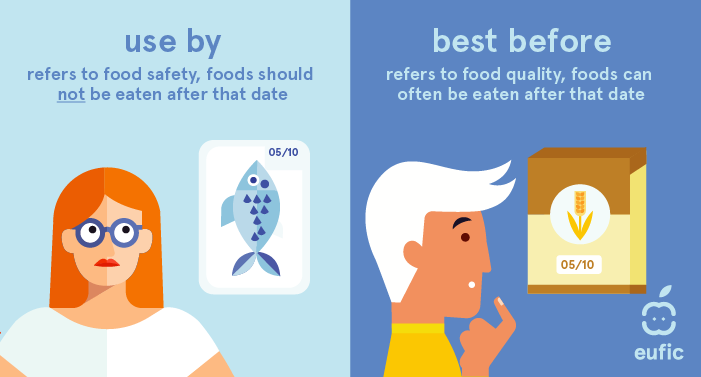
4. Use what you have
- Check what’s in the fridge and cupboards regularly and use up foods nearing their expiry dates.
- Combine any vegetables left into a ‘clean-out-the-fridge’ pot of pasta, soup, omelette, or stir fry. We get to enjoy a new recipe and avoid throwing out good food.
- Get creative, find recipes on how to cook with few ingredients
- Freeze food before its use-by date. Frozen fruits can make a nice addition to smoothies!
5. Avoid serving too much
Here are some simple practices that help:
- Serve small portions and come back for seconds, rather than scraping excess food from our plates into the bin.
- Use smaller sized plates to serve food.
- Measure portion sizes with low-cost kitchen helpers such as measuring cups and scoops for appropriate portion sizes.
- Improve the dining experience by being mindful, eating away from a screen and taking more time
- Use leftovers for lunch the next day. Not enough leftovers for a whole meal? Mix and match from different meals, add some salad or bread, and a feast appears before us!
- Freeze for later. For the tastiest results, frozen leftovers should be used within three months (more on how to safely handle them here).2
- Date-label leftovers
- Ask for a doggy bag when dining out, it is okay to take leftovers and there should be no shame about it. Bringing a container can also help reduce packaging waste.
- Share tasty leftover recipes with friends and family, host a meal where you cook with leftover food or initiate a food waste contest in your community.
6. Know your moulds
If mould appears, whether we can still ‘rescue’ the food depends on what it is. The following general rules can help us know what to do.
Hard foods should be safe to consume once the mouldy part is removed along with the surrounding area. This includes hard cheeses, hard cured meats (such as salami and ham) and firm fruits and vegetables (such as cabbages bell peppers, root vegetables).
Soft foods should be thrown out once they start to mould. This includes cooked leftovers, soft cheeses, yoghurts and other dairy products, bread, jams and soft fruits and veggies (such as cucumbers, peaches, tomatoes, berries and so on).3 This is because mould can spread in soft foods (and we might not even see it).
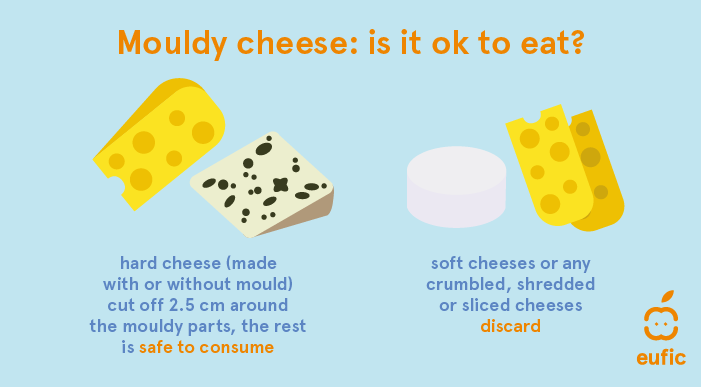
7. Share extra food with others
If the food is still safe, but we know we won’t be able to use it ourselves, there are ways to share:
- Ask around, friends or colleagues could make use of what we won’t.
- Check if there are food banks around that accept donations and distribute them to people in need.
- Invite neighbours over for a meal, it’s not only a nice way to gain new friends.
8. Repurpose waste where possible
Try to repurpose food scraps before they make it to the compost bin. Broccoli stems and florets can be chopped and cooked, cauliflower leaves can be baked, potatoes can be oven baked with skin, herbs can be frozen in cubes, roasted celery leaves can be used as a seasoning and other scraps can be transformed into homemade stock!
- Keep a food waste diary and scribble down creative ways to stop wasting food. Use Apps or find templates online.
- Pick up food from restaurants and stores that would otherwise be wasted. There are plenty of inspiring and growing initiatives to share, exchange or buy otherwise wasted food. Scroll down for a full list of European initiatives and Apps.
For what can’t be saved, composting is an option. Composting a natural process where microorganisms biodegrade food waste, turning it into a dark, earthy, nutrient-rich material that promotes healthy soil. Note that while composting food at home does not reduce food waste, it can go a small way to helping reduce the environmental impact by repurposing waste into compost that helps nourish the soil.
- Community composting and separate food waste bins are a step in the right direction. We can check with our local government, to see what kind of food waste collection is available.
- Or we can feed our garden! Compost is an affordable organic alternative to purchased fertiliser, but it’s best to stick to plant-based foods (as meat and animal products could lead to bad smells and pests).4
